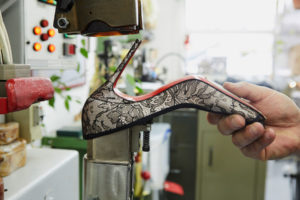Heel and Sole Replacement: How Your Repair Shop Can Extend the Lifespan of Footwear

In a world increasingly conscious of sustainability and cost-effectiveness, the role of shoe repair shops in extending the lifespan of footwear is more important than ever.
A pair of shoes endures significant wear and tear through daily use, leading to worn-out heels and soles. However, rather than discarding these shoes, heel and sole replacement offers a practical solution. At Italian Shoe Factory, we offer various services from adding sole protectors, gluing damaged heels, hiding heel scuff marks from soles and heels to complete replacement of heels and soles.
This guide aims to explore the intricacies of heel and sole replacement, highlighting how your repair shop can revitalize customers’ cherished footwear, thereby fostering a culture of repair and reuse.
Understanding Sole Replacement
Sole replacement is one of the most popular services and a more involved process but is crucial for prolonging the life of shoes, especially those with quality uppers.
Procedures Involved in Sole Replacement
- Detaching the Old Sole: This includes removing both the outer sole and, if necessary, the midsole. The detachment must be done carefully to avoid damaging the shoe’s upper.
- Insole Assessment: If the damage has reached the insole, it may also need replacing. This step is crucial for maintaining the shoe’s structural integrity and comfort.
- Preparing for the New Sole: The area is cleaned, and any necessary repairs to the shoe’s upper are made. This ensures a solid base for the new sole. If the cobbler has the sole replacement for your shoe available then it can be a cost effective method otherwise a custom sole has to be made to fit your shoe. Ofcourse a handcrafted outsole has a different finish from a machine made outsole.
- Attaching the New Sole: A suitable adhesive is applied, and the new sole is attached. Precision in alignment is key to ensuring comfort and durability.
- Drying and Finishing: The shoe is left to dry, ensuring the adhesive sets properly. The new sole may be trimmed or shaped for a perfect fit.
Benefits of Sole Replacement
- Prolonged Shoe Life: Sole replacement can significantly extend a shoe’s lifespan, especially for high-quality shoes and boots.
- Cost-Effectiveness: It provides a financially savvy alternative to purchasing new footwear.
- Sustainability: This service supports environmental sustainability by reducing waste.
Understanding Shoe Heel Repair & Replacement
Heel replacement is a common yet essential service in shoe repair, addressing the frequent wear shoes undergo at their heels.
When is Heel Replacement Necessary?
Heel replacement becomes necessary when there is excessive wear or damage. Signs include visibly worn-down heels, discomfort while walking, or the appearance of small cobbler’s nail tips, which indicate that the heel has worn down to its base.
Benefits of Heel Repair
- Extended Footwear Lifespan: Rearing damaged heel can add months and sometimes years to a shoe’s life, delaying the need for a new purchase.
- Comfort and Safety: Worn-out heels can lead to discomfort and foot injuries. A new heel restores comfort and reduces the risk of slips and falls.
- Cost-Effective: Heel replacement is often more affordable than buying new shoes, especially for high-quality or designer footwear.
Cost Considerations
The cost of heel and sole replacement varies based on several factors:
- Material Costs: Different materials (rubber, leather, synthetic) have varying costs.
- Extent of Damage: More extensive damage may require more materials and labor, increasing the cost.
- Expertise and Location: Skilled cobblers may charge more, and prices can vary by geographic location.
For instance, heel replacement can range from $20 to $65 USD, influenced by these factors.
Conclusion
Heel and sole replacement services are not just about repairing shoes; they’re about contributing to a sustainable, cost-effective approach to fashion and consumerism. By understanding and offering these services, repair shops play a crucial role in the community, promoting a culture of repair and reuse. This not only saves customers money but also aligns with environmentally conscious values, making it a win-win for both the consumer and the planet.
